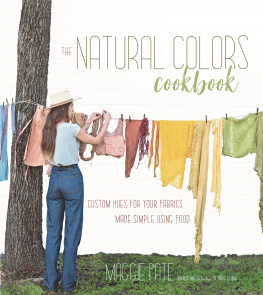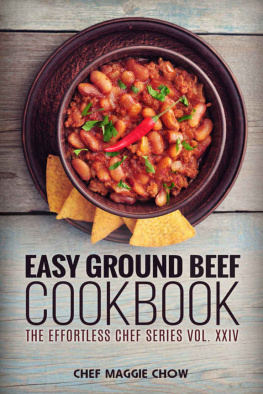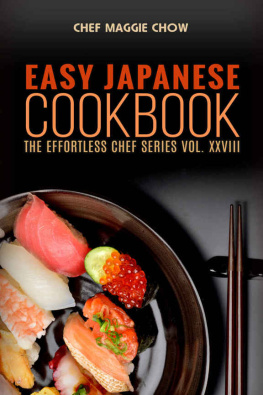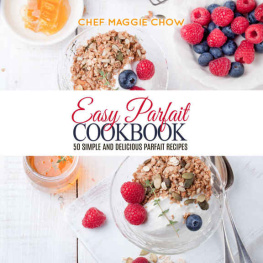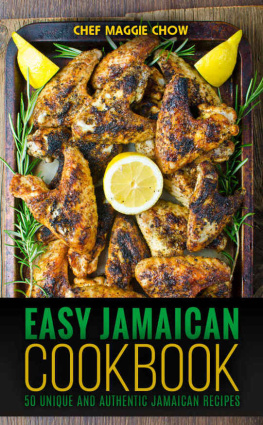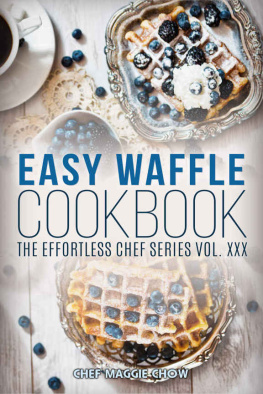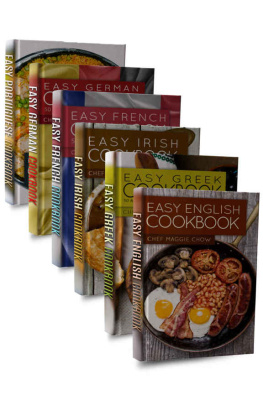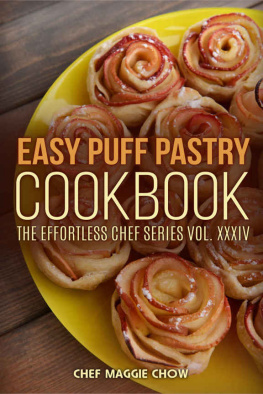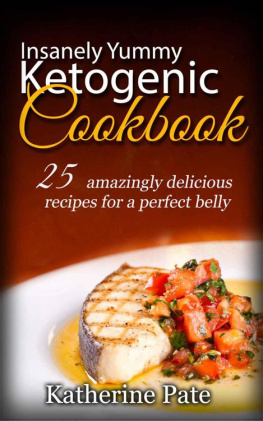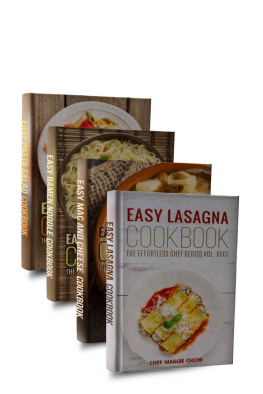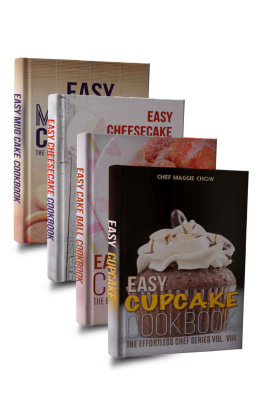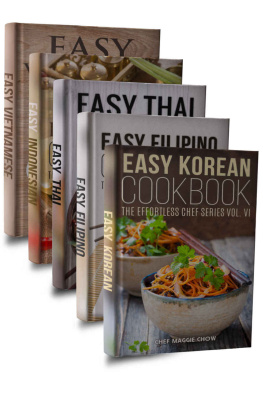Maggie Pate - The Natural Colors Cookbook
Here you can read online Maggie Pate - The Natural Colors Cookbook full text of the book (entire story) in english for free. Download pdf and epub, get meaning, cover and reviews about this ebook. year: 2018, publisher: Page Street Publishing, genre: Home and family. Description of the work, (preface) as well as reviews are available. Best literature library LitArk.com created for fans of good reading and offers a wide selection of genres:
Romance novel
Science fiction
Adventure
Detective
Science
History
Home and family
Prose
Art
Politics
Computer
Non-fiction
Religion
Business
Children
Humor
Choose a favorite category and find really read worthwhile books. Enjoy immersion in the world of imagination, feel the emotions of the characters or learn something new for yourself, make an fascinating discovery.
- Book:The Natural Colors Cookbook
- Author:
- Publisher:Page Street Publishing
- Genre:
- Year:2018
- Rating:3 / 5
- Favourites:Add to favourites
- Your mark:
- 60
- 1
- 2
- 3
- 4
- 5
The Natural Colors Cookbook: summary, description and annotation
We offer to read an annotation, description, summary or preface (depends on what the author of the book "The Natural Colors Cookbook" wrote himself). If you haven't found the necessary information about the book — write in the comments, we will try to find it.
The Natural Colors Cookbook — read online for free the complete book (whole text) full work
Below is the text of the book, divided by pages. System saving the place of the last page read, allows you to conveniently read the book "The Natural Colors Cookbook" online for free, without having to search again every time where you left off. Put a bookmark, and you can go to the page where you finished reading at any time.
Font size:
Interval:
Bookmark:


CUSTOM HUES FOR YOUR FABRICS MADE SIMPLE USING FOOD
OWNER AND DESIGNER OF NDE STUDIO

The author and publisher have provided this e-book to you for your personal use only. You may not make this e-book publicly available in any way. Copyright infringement is against the law. If you believe the copy of this e-book you are reading infringes on the authors copyright, please notify the publisher at: http://us.macmillanusa.com/piracy.
DEDICATED TO ALL THE MAKERS AND DILIGENT SLOW CRAFTERS STRIVING TO THRIVE IN THEIR ART. WE STRUGGLE TO SEE THE VALUE IN OUR OWN LABOR DAILYYET EACH DAY OUR HANDS REMAIN CALLOUSED, SCRATCHED, STAINED AND STRAINED. KNOW THAT THERE IS NEVER-ENDING WORTH IN YOUR WORK.


I grew up in the South, where nearly all social events are connected to food. Springtime gatherings are oriented around graduation luncheons and wedding receptions; the summer months are dedicated to barbeques and picnics. With fall comes tailgating and cookouts, followed by winter holidays full of family recipes and potlucks. Being social in the South is an eating affair, and growing up my family always had leftovers, the majority of which ended up being thrown out. At the time, I never gave much thought to the waste.
My relationship to food began to change when I became a vegetarian and moved to New York. One of my weekly errands was to visit the Union Square Market, which felt more like visiting a foreign country than a chore. I loved walking from booth to booth and questioning the farmers about their exotic produce. Before long I was cooking more than eating out, even spending evenings planning meals with friends on Brooklyn rooftops. I reconnected with food, and gained a new respect for it. I joined the Slow Food movement, which challenges us to embrace local seasonal cuisine, and while this transition felt natural for me, that isnt customary for many.
It is undeniable that we live in a culture of immediacy. From fast food to fast fashion, our commerce and lifestyle are structured around rapid consumption. Forty percent of food produced in the United States is wasted. Grocery stores pay a huge role in food waste by rejecting ugly produce, overstocking their shelves and ordering inventory for out-of-season items. Ninety percent of food scraps are tossed into oxygen-deprived landfills, where the decomposition process causes them to release methane gas. This makes food waste one of the largest contributors to climate change and the greenhouse effect. When the culture of immediacy becomes commonplace, we forfeit the value of locality, craft, culture, sustainability and artistry. We see forests torn down for cropping. Biodiversity disappears. And yet, one out of five children in the United States still doesnt get enough to eat. There is something blasphemous and sinful about wasting food when humans are starving, animals are becoming extinct and our Mother Earth is ailing.
Looking at food as something beyond a source of sustenance was a mindful shift I had to learn to make, and this book aims to change how you see food as well.
All of the natural dye recipes youll see here are cultivated by using either seasonal produce or food waste, from the tan of leftover coffee to the ashy blue of water-soaked black beans, and from the blush of an avocado pit to the icy mint of fennel. My obsession with natural dyeing began when I launched my own company that created slow fashion clothing, natural-dyed home goods and eco-art weavings. I am 100 percent self-taught; I do not have a fancy degree in fiber arts or chemistry. This might be a negative to some, but I hope you find it reassuring, especially if you too are a beginner looking to explore natural hues. Natural dyeing is a craft that anyone can master. And food-waste dyeing is a craft that shows how obtainable natural color is with items straight from your kitchen, garden or compost!
This book is organized by color, and there are dye projects scattered throughout each section that aim to encourage and enliven your creativity. At the end of every color chapter youll find a color collection project which will use many or all of the dye recipes from that section to create unique home goods and textile art. Youll be shocked by some of the unexpected colors conjured by food waste, as well as the subtle nuances that can be found within each hue. Its my hope that this book will inspire you to find items to repurpose with natural hues, to rekindle corners of your home with handmade art and crafts, and to explore all aspects of the textile arts.
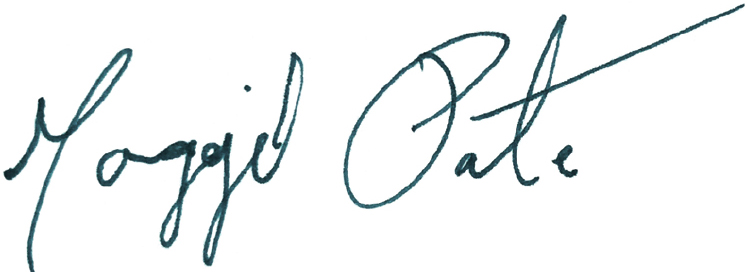
Natural dyes possess additional beauty because they come from living things. I sometimes feel that some of that life is still there.
J.N. LILES, The Art and Craft of Natural Dyeing: Traditional Recipes for Modern Use


NATURAL DYEING
For more than 5,000 years, color has been created using plants. From China to Peru and from Morocco to the Americas, the native plants and herbs from each region determine the natural colors that can be produced. Color palettes are unique to each area, similar to food production and growing seasons. Natural dyeing is a way to reconnect with local community, culture, craft and environment.
The first chemical color was created by accident in 1856. From that date forward, it only took 100 years for the craft of natural dyeing to all but vanish. The invention of synthetic dyes transformed our entire perception of color. From color names to the surge of the fashion industry and mass textile production, an entire marketplace was constructed. It is rather astonishing to think that only 150 to 160 years ago all color was created using natural dyes. Now it is a lost art form; like an endangered language, natural dyeing has only been preserved and maintained by remote villagers and small crafters.
The true loss isnt just in the craft and culture of natural colors, but in the magical chemistry as well. A synthetic color only contains one molecule, which means it can only produce one hue. Natural dyes, on the other hand, are made up of multiple molecules, meaning that one natural dye bath can produce a wide range of hues. For example, onion skins can create tones ranging from yellows to pinks to ochres to olives. It is because of this process that natural dyeing isnt just about an end product, it is also an adventure to discover living color.
Font size:
Interval:
Bookmark:
Similar books «The Natural Colors Cookbook»
Look at similar books to The Natural Colors Cookbook. We have selected literature similar in name and meaning in the hope of providing readers with more options to find new, interesting, not yet read works.
Discussion, reviews of the book The Natural Colors Cookbook and just readers' own opinions. Leave your comments, write what you think about the work, its meaning or the main characters. Specify what exactly you liked and what you didn't like, and why you think so.

